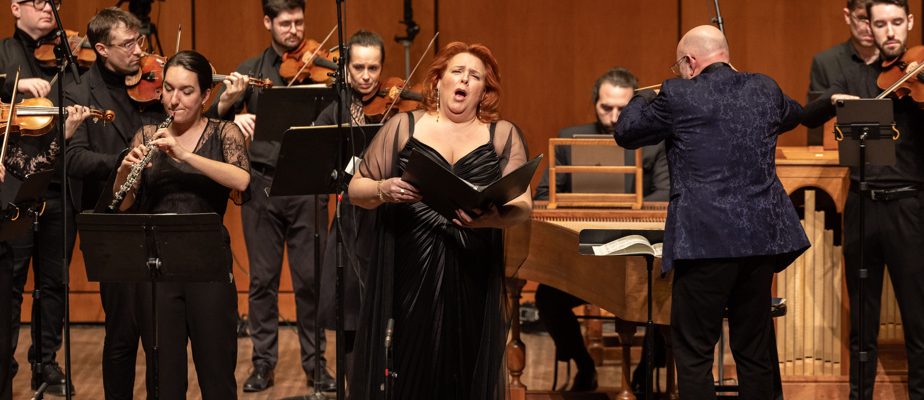I Musici offered on Thursday evening to hear the “great Marie-Nicole Lemieux”, as the ensemble had titled the program, entirely devoted to Bach. An evening where the contralto generally lived up to its reputation.
As he does every step of this 40e season of I Musici, conductor Jean-François Rivest invited one of the members of the orchestra to present the concert. It was an opportunity for the only double bassist in the group, Yannick Chênevert, to speak, in a very touching way, about his relationship with this orchestra that he had heard for the first time during his secondary studies. A great way to recall the importance of musical mediation to ensure the continuation of the world.
The always lively Marie-Nicole Lemieux appeared in a different light, all with dignity and gravity to approach the three cantatas on the program, in the lowest order.o 82 (Ich habe genug), the no 54 (Widerstehe doch der Sünde) and the no 170 (Vergnügte Ruh, beliebte Seelenlust).

PHOTO JOSIE DESMARAIS, THE PRESS
Marie-Nicole Lemieux
Because the texts set to music by Bach have nothing to do with joy, he who sets to music phrases like “I rejoice in my death”, “I am tired of living any longer” or “Being ashamed of the glory of God led to death”!
If the singer’s voice took some time to find its ease (this is completely normal), it nevertheless continued to lack roundness at times, a clear consequence of the artist’s dramatic commitment, an element which, if it remains a precious “trademark” of the contralto, could still leave room for more “fruitiness” in the timbre.
Marie-Nicole Lemieux’s German, if it remains a little sharp on certain vowels (a typically French-speaking trait), nevertheless has the great merit of bouncing well on consonants, which is far from being given to everyone .
Her Erbarme dichof the Passion according to Saint Matthewgiven as an encore without score, was simply transcendent.
However, there was not only the contralto on the program for this evening of I Musici. Jean-François Rivest had the good idea of inserting, in the second part, between the cantatas nbone 54 and 170, the slow movement of Brandenburg Concerto no 6which, by its tone and its character, skillfully set the table for the sweetness of the first aria of the last cantata while also allowing us to hear the violists Thierry Lavoie-Ladouceur and Elvira Misbakhova solo.
THE Violin Concerto in E major, BWV 1042, which opened the concert with Dominic Guilbault as soloist, was not the highlight of the evening. No orchestral musician generally relegated to a certain anonymity can excel when the spotlight is suddenly on him.

PHOTO JOSIE DESMARAIS, THE PRESS
The I Musici ensemble, directed by Jean-François Rivest
Otherwise, we can only praise the precise and imaginative direction of Jean-François Rivest, who each time chose tempos well suited to the character of the different pieces.
Finding the right speed for the very long Schlummert ein, ihr matten Augen (in cantata no 82) is a challenge, but the conductor has achieved the right balance allowing us to move forward without losing any of the serenity inherent in the piece.
